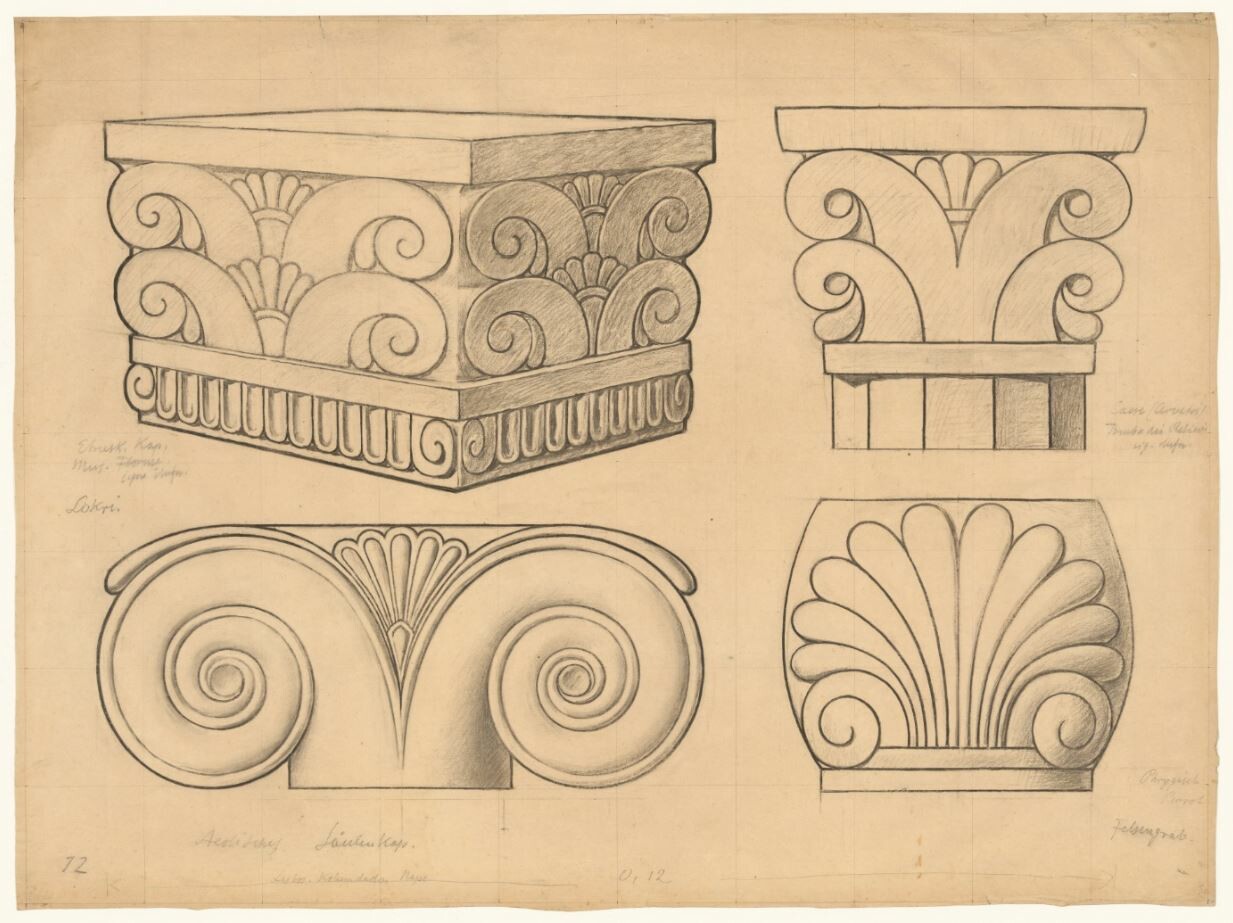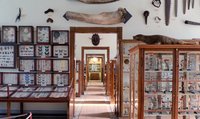Entwurf mit der Darstellung von vier Kapitellen, die nach Meurer die Umwandlung des ägyptischen Südzeichens in Kapitellform belegen. Das Blatt ist der originale Entwurf zu einer Wandtafel, die als Lehrmittel an Kunstgewerbeschulen gebraucht wurde. Unten links bezeichnet mit Bleistift "12".
Meurer gab das Blatt wieder in seiner Publikation "Vergleichende Formenlehre des Ornamentes und der Pflanze" von 1909 unter der Abt. XXI., Textillustration 3. Es zeigt ein Etruskisches Kapitell aus Chiusi, eines aus der Tomba dei relievi, eines aus dem Tempel des Apollo auf Lesbos und das letzte aus einem phrygischen Grab. Laut der hier zu findenden Anmerkung übernahm Meurer die Kapitellformen von Fotografien eines M. Ramley.
Restauriert 2021 mit Steuermitteln auf der Grundlage des vom Sächsischen Landtages beschlossenen Haushaltes.
en

